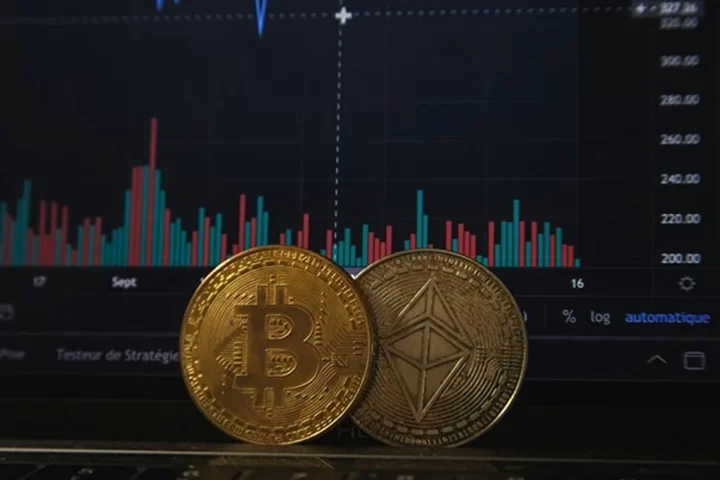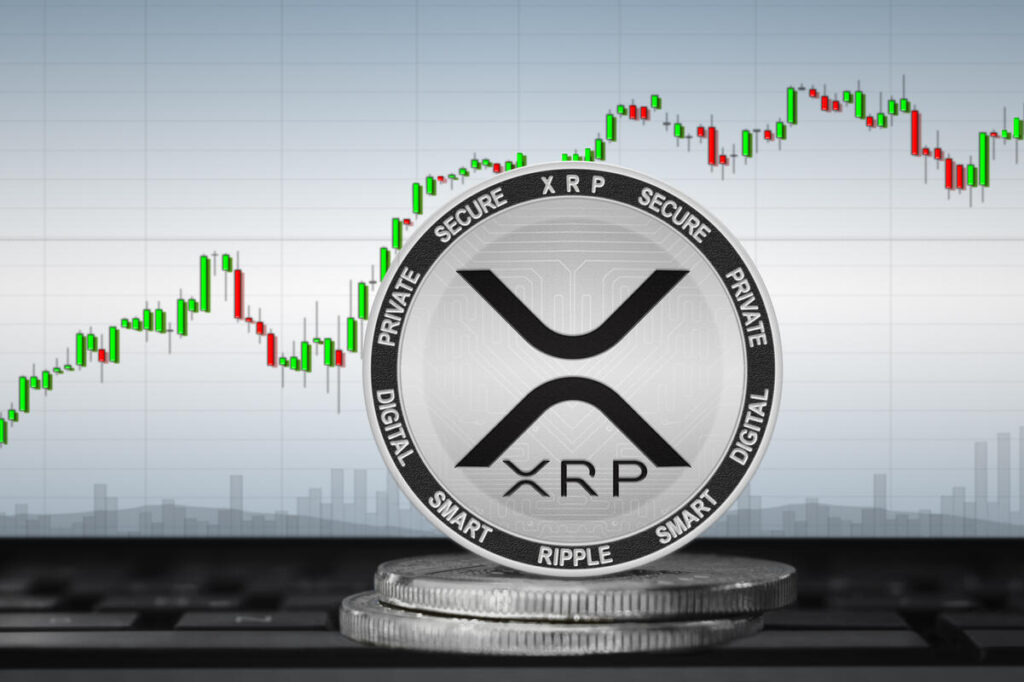Bitcoin slipped back to its lowest levels of the week on Tuesday, as traders closely watched an open gap in the Chicago Mercantile Exchange (CME) Bitcoin futures market.
Data from Cointelegraph Markets Pro and TradingView showed Bitcoin dropping to $107,460 on Bitstamp, marking a 2.5% decline for the day.
The move halted Bitcoin’s early-week rebound but stopped just short of completely filling the latest CME futures gap.
Understanding the CME Futures Gap
CME Bitcoin futures often create “gaps” when trading closes on Fridays and reopens on Mondays at different price points, typically due to weekend volatility in the spot market.
These gaps tend to fill relatively quickly as prices move back into the missing range between the prior close and the new open.
“$BTC opened with a small CME gap below this week. Price did come down to close some of it, but there’s still a bit left. So good to keep that in mind if price were to trade close to it,” trader Daan Crypto Trades said on X.
He added that Bitcoin had already filled a larger gap at $110,000 last week — one that had persisted since late September before Bitcoin rallied to record highs.
Market Eyes $107,000 as Key Level
For now, the remaining unfilled portion of the current CME gap sits near $107,390.
Last week’s market turbulence saw Bitcoin futures drop as low as $103,750, increasing concerns that further downside could occur if momentum fails to return.
“The bulls would want to hold $107K going forward,” Daan Crypto Trades said.
“If this were to start grinding back down, and get close to last Friday’s wick, then that’d just show a lot of weakness to me.”
Traders Warn of Potential Dip Below $100,000
Some traders believe the $100,000 support zone could soon be tested again.
Analyst Roman pointed out that Bitcoin’s recent rebound lacked sufficient trading volume to confirm a sustainable recovery.
“Didn’t trust the low volume ‘breakout’ as volume never validated a true reclaim of support. 100-98k here we come!” Roman posted.
Similarly, investor and trader Crypto Tony shared a bearish short-term outlook, noting, “Overall I expect $100,000 to hit with a possible smack lower to $95,000.”
Crypto investor Ted Pillows echoed that view, suggesting that if Bitcoin fails to find a new floor, the correction could deepen toward those lower ranges.
While Bitcoin remains above the critical $100,000 threshold for now, traders appear increasingly cautious as the market looks to determine whether recent highs were a temporary surge or the start of renewed volatility.
Bitcoin held around $107,000 on Saturday, as traders signaled caution and warned of possible new lows in the near term.
Data from Cointelegraph Markets Pro and TradingView indicated subdued volatility heading into the weekend, providing a short break after a turbulent week that saw BTC drop roughly 7%.
At its lowest levels in months, the cryptocurrency remains under pressure due to weak buyer demand and shifting macroeconomic conditions.
“It all lines up nicely across the board for another wave down,” trader Crypto Tony said in an X post.
“Bitcoin I see us dropping to $95,000, possibly testing the $91,000 region before we find a bottom.”
Short-Term Sentiment Divided
While some traders anticipate further declines, others expect price stability over the weekend.
“BTC did a good job recovering some ground on Friday before the CME close,” said trader Daan Crypto Trades.
“This makes it so we’re likely to stick around this ~$107K level during the weekend.”
He identified $105,000 as a crucial support level, suggesting a potential rebound if global stock markets continue to strengthen.
Equities ended the week on a more optimistic note, with the S&P 500 closing at 6,664 — recovering roughly half of its previous losses.
Analysts attributed the rebound partly to U.S. President Donald Trump’s comments that recent tariff increases on China may not last, easing investor concerns.
Gold prices, which recently reached record highs, also moderated slightly.
RSI Suggests a Potential Reversal
Some technical indicators point to possible relief for Bitcoin bulls.
Analysts have noted that Bitcoin’s relative strength index (RSI) is at its lowest level since April, when BTC briefly fell to $75,000 before rebounding.
On the four-hour chart, RSI is forming a bullish divergence — with price reaching lower lows while RSI moves higher, suggesting selling pressure is beginning to ease below $110,000.
However, market sentiment remains cautious.
The Crypto Fear & Greed Index fell to 22 out of 100 on Friday, its first time entering “extreme fear” territory since April, indicating heightened bearishness across the market.
Bitcoin may face challenges sustaining its upward momentum unless fresh catalysts reignite investor interest, according to Glassnode.
“Without a renewed catalyst to lift prices back above $117.1k, the market risks deeper contraction toward the lower boundary of this range,” the report said.
Bitcoin is trading around $110,840, approximately 5% below the $117,000 level, according to CoinMarketCap.
Over the past 30 days, Bitcoin has declined 4.19%.
Glassnode noted that historically, failure to hold the $117,000 zone has often led to mid- to long-term market corrections.
The report also highlighted increased profit-taking among long-term holders, suggesting potential “demand exhaustion.”
Shubh Varma, CEO of Hyblock Capital, told Cointelegraph he expects a “relatively volatile month” for Bitcoin, with potential upside between $116,000 and $120,000.
Varma added that “consolidation is the likely outcome” following a recent market crash but noted positive momentum indicators remain.
“ETFs inflows remain quite high, and spot volume seems healthy,” he said.
Before the recent crypto market drop, U.S.-based spot Bitcoin ETFs had a nine-day inflow streak totaling $5.96 billion.
Another potential bullish factor is expected rate cuts from the U.S. Federal Reserve, which often support riskier assets like cryptocurrencies.
The CME FedWatch Tool indicates a 95.7% probability of a rate cut at the Fed’s October 29 meeting.
Matt Mena, a crypto research strategist at 21Shares, said the outlook for the rest of the year is “increasingly constructive for digital assets.”
Mena suggested Bitcoin could reach $150,000 as macroeconomic factors and institutional flows align.
Other analysts, including BitMEX co-founder Arthur Hayes and Unchained Market Research director Joe Burnett, have forecasted Bitcoin could reach $250,000 by year-end 2025.
BitMine, the world’s largest corporate holder of Ether, leveraged last weekend’s market downturn to significantly expand its holdings, demonstrating continued institutional confidence in Ethereum.
The company said it purchased Ether more aggressively during the recent market volatility, bringing its total holdings to over 3 million ETH, representing roughly 2.5% of the cryptocurrency’s total supply.
BitMine’s average purchase price for the recent acquisitions was $4,154 per token.
Between Friday and Monday, the firm acquired 202,037 ETH, valued at approximately $827 million, according to a statement on X.
This increase pushed BitMine’s overall crypto portfolio to $13.4 billion, which includes $12.9 billion in cryptocurrency and “moonshot” investments, 192 Bitcoin, $104 million in cash, and a $135 million stake in Nasdaq-listed Eightco Holdings.
The purchases came amid a sharp market correction on Friday, which triggered around $19 billion in liquidations over the weekend.
Tom Lee, chairman of BitMine and head of research at Fundstrat, said the market downturn created an opportunity to buy Ethereum at discounted prices.
“The crypto liquidation over the past few days created a price decline in ETH, which BitMine took advantage of,” Lee said.
He added that the company is now “more than halfway towards our initial pursuit of the ‘alchemy of 5%’ of ETH.”
Lee also highlighted the broader investment logic, stating, “Volatility creates deleveraging, and this can cause assets to trade at substantial discounts to fundamentals, or as we say, ‘substantial discount to the future,’ and this creates advantages for investors, at the expense of traders.”
BitMine’s approach may influence other institutional investors to adopt similar long-term accumulation strategies.
Interest in the company extends beyond crypto investors, as its stock, BMNR, was recently the 22nd most widely traded on U.S. markets, averaging over $3.5 billion in five-day trading volume as of Friday.
Despite this, BMNR’s stock price fell 11% over the past five days, following a short position by Kerrisdale Capital, which criticized BitMine’s business model as “on its way to extinction.”
The company’s dual focus on cryptocurrency and traditional equities reflects a broader trend of institutional participation in digital assets.
ARK Invest CEO Cathie Wood has drawn a parallel between Hyperliquid and Solana’s early rise, calling the decentralized exchange “the new kid on the block.”
“It’s exciting. It reminds me of Solana in the earlier days, and Solana has proven its worth and is, you know, there with the big boys,” Wood said during a recent interview on the Master Investor podcast.
Wood explained that while ARK Invest has not disclosed any holdings in Hyperliquid, the protocol’s growth is one she is closely monitoring. Her comments come at a time when competition among perpetual futures decentralized exchanges (DEXs) is intensifying. Aster, another player in the space, launched its token earlier this month and has already seen its trading volume and open interest surpass Hyperliquid’s.
ARK Invest’s Focus on Core Assets
ARK Invest currently maintains exposure to three major cryptocurrencies across its public funds: Bitcoin (BTC $111,777), Ethereum (ETH $4,118), and Solana (SOL $210.18). Wood noted that the firm’s Solana exposure is connected to Breera Sports, which is tied to the Solana treasury and backed by Middle Eastern investors. She added that economist Art Laffer has advisory links to the project.
While the fund has diversified into some derivative protocols like Uniswap and Solana-related markets, Wood stressed that its core focus remains narrow by design. “If you’re talking about the big boys or girls, those are the big three right now,” she said.
Bitcoin’s Enduring Dominance
Despite the explosion of tokens and new protocols, Wood argued that the long-term future of crypto belongs to a select group of networks. “We don’t think there are going to be very many cryptocurrencies,” she said. “Bitcoin owns the cryptocurrency space when it comes to pure crypto.”
Wood emphasized Bitcoin’s role as a monetary system with a fixed supply and resilience, contrasting it with Ethereum’s role powering decentralized finance. She also noted the growing importance of stablecoins but reiterated that Bitcoin remains central to ARK’s long-term thesis.
Retail and Quant Traders Drive DEX Growth
According to Bitget Wallet’s chief marketing officer Jamie Elkaleh, decentralized exchanges like Hyperliquid are seeing a surge in activity from retail traders and semi-professional quants. Incentives such as airdrops, low fees, and fast execution are helping drive this shift.
Institutions, however, still prefer centralized exchanges for their fiat access, compliance, and brokerage support. Yet the performance gap between DEXs and CEXs is narrowing, with order-book platforms such as Hyperliquid and dYdX v4 now offering execution speeds and liquidity previously limited to centralized venues.
XRP’s price action is sitting at a critical juncture, with the altcoin consolidating at the base of a descending triangle — a pattern that often signals bearish pressure.
The token hovered around the $2.75 support level on Friday, but analysts warned that sustained selling could push prices down toward the $2.65 to $2.45 range.
Such a move would represent an 8% to 10% decline, coinciding with a daily fair value gap (FVG) overlapping the 0.50–0.618 Fibonacci retracement levels.
This area could act as a liquidity magnet while offering a potential springboard for a bullish recovery.
Onchain Data Signals Strong Buyer Interest
Onchain metrics support the view that XRP may be approaching an important liquidity pocket.
Glassnode’s Unrealized Price Distribution (URPD) showed a dense cluster of buyers between $2.45 and $2.55, indicating a strong cost basis for many holders.
If price returns to this range, buyers may defend it aggressively, potentially laying the groundwork for a rebound.
The altcoin’s current behavior mirrors its fractal pattern from the first quarter.
XRP has already tested the $2.65 mark twice, but historical price structures suggest a sweep below this level into the liquid-heavy FVG could occur before a sustainable rally emerges.
Repeating Patterns Could Lead to Volatility
Market watchers have noted similarities between today’s setup and earlier fractals.
Previous patterns showed weakness heading into the weekend, followed by an FVG sweep early the following week.
If this plays out again, XRP could revisit the $2.50 zone as soon as Monday.
However, analysts caution that historical fractals do not guarantee a repeat performance.
A decisive break above $2.90 could invalidate the bearish structure altogether, but current momentum still favors one last dip into the $2.50 area.
Compression and ETF News Fuel Uncertainty
Sistine Research observed that XRP may be entering a significant expansion phase in the coming months.
The analysis highlighted how XRP’s tight price action over the past 10 weeks has compressed its order book, leaving larger gaps between levels.
This marks the third compression phase since the US elections in November 2024 and the tightest so far, built on three consecutively higher price points.
Such conditions have historically preceded sharp breakouts as built-up liquidity is released.
Crypto analyst Pelin Ay pointed to spot market flows as evidence of the battle between buyers and sellers.
The 90-day spot taker CVD indicates that sellers remain in control despite brief bursts of buyer strength earlier in 2025.
A sustained upside move will require a decisive shift in volume from buyers, which has yet to materialize.
Meanwhile, ETF news adds another layer of uncertainty.
Franklin Templeton’s XRP ETF decision has been postponed until Nov. 14, while REX/Osprey’s XRPR product debuted with nearly $38 million in first-day volume.
Analysts warn that optimism may already be priced in, heightening the risk of a “sell the news” reaction when decisions are finalized.
The FTX Recovery Trust has confirmed plans to distribute a new round of reimbursements to creditors, marking another significant milestone in the ongoing effort to compensate those impacted by the collapse of the exchange.
The entity, which was established to handle repayments after the platform’s bankruptcy, said the latest tranche will be worth around $1.6 billion. The distribution is scheduled for September 30, with creditors expected to see funds arrive in their accounts within three business days of the payment date.
Breakdown of September’s Distribution
According to details shared by the trust, the payout will be distributed across different categories of claims.
Dotcom Customer claims will receive a 6% payout.
US Customer Entitlement Claims will see a 40% distribution.
General Unsecured Claims and Digital Asset Loan Claims will receive a 24% share.
Convenience claims, which are capped at smaller amounts, will benefit from a 120% reimbursement as part of this latest tranche.
This distribution follows two earlier payouts, which began earlier this year.
In February, the trust released $1.2 billion to claimants, followed by a much larger $5 billion payout in May.
Assets Set Aside for Creditors
The FTX Recovery Trust has earmarked up to $16.5 billion to settle claims from creditors and former customers.
The scale of these reimbursements reflects both the size of the exchange prior to its downfall and the magnitude of losses suffered when the company entered bankruptcy.
The collapse of FTX in 2022 had a seismic effect on the cryptocurrency market.
The event deepened the bear market that was already underway, eroding confidence in digital assets and sparking greater scrutiny from regulators worldwide.
Even today, traders and investors watch developments around repayments closely, given the potential impact large inflows of capital back into the market could have on prices.
Sam Bankman-Fried’s Conviction and Appeal
The downfall of FTX has been closely tied to its former chief executive, Sam Bankman-Fried.
In November 2023, he was found guilty on seven charges, including wire fraud, wire fraud conspiracy, securities fraud, commodities fraud conspiracy, and money laundering conspiracy.
He was sentenced in March 2024 to 25 years in prison.
Judge Lewis Kaplan, who presided over the trial, described Bankman-Fried’s actions and the collapse of the exchange as a “serious” crime that justified decades of imprisonment.
Bankman-Fried’s attorneys are preparing to appeal the conviction this November.
They have argued that he did not receive a fair trial, claiming he was effectively treated as guilty from the start.
The defense has also asserted that FTX was not truly insolvent and that the company had sufficient funds to meet its obligations and repay customers.
Market Implications
With the third payout approaching, speculation continues over how these distributions might influence the wider crypto sector.
Some analysts believe creditors receiving significant amounts of cash could lead to renewed investment in Bitcoin and other digital assets.
Others caution that creditors may simply choose to exit the market altogether, pocketing their reimbursements instead of reinvesting.
Either way, the September distribution represents another step forward in one of the most closely watched bankruptcies in recent financial history.
Spot Bitcoin exchange-traded funds (ETFs) saw net inflows of $332.7 million on Tuesday, reversing recent trends and outpacing Ethereum ETFs, which recorded $135.3 million in net outflows, according to SoSoValue data.
The latest movement underscores shifting investor sentiment between the two largest cryptocurrencies.
Bitcoin Gains Institutional Support
Fidelity’s FBTC led the inflows, securing $132.7 million.
BlackRock’s IBIT followed with $72.8 million, while other firms, including Grayscale, Ark 21Shares, Bitwise, VanEck, and Invesco, also registered inflows.
The rebound comes at a time when Bitcoin’s reputation as “digital gold” is gaining renewed traction among institutional investors.
“Bitcoin is once again attracting institutional flows as its digital gold narrative regains traction,” said Vincent Liu, chief investment officer at Kronos Research.
Ethereum Takes a Hit
By contrast, Ether ETFs faced significant withdrawals.
Fidelity’s FETH lost $99.2 million, while Bitwise’s ETHW shed $24.2 million.
This marked a sharp reversal from August, when Ethereum funds attracted $3.87 billion, compared to $751 million in outflows from Bitcoin ETFs.
Ether products also recorded $164 million in outflows on Friday, further adding to recent losses.
Market Sentiment Shifts
Analysts say the divergence reflects broader macroeconomic uncertainty.
“With gold at all-time highs, appetite for hard assets is clearly strengthening,” Liu explained.
“In this environment of macro uncertainty, BTC is standing out against ETH, which appears to be entering a period of profit-taking,” he said.
Liu suggested that if volatility persists across global markets, Bitcoin could continue to outperform Ethereum thanks to its perceived safe-haven qualities.
Crypto Funds Recover
The shift in flows comes as crypto investment products overall rebounded strongly.
Last week, funds posted $2.48 billion in net inflows, recovering from $1.4 billion in outflows the previous week.
August ended with $4.37 billion in inflows, lifting year-to-date figures to $35.5 billion, a 58% increase compared to 2024.
Despite the rebound, assets under management dropped 7% week-over-week to $219 billion, showing that volatility remains a key factor in the sector.
Ethereum endured a wave of forced selling this week, with more than $300 million in liquidations striking within hours.
The sharp reset rattled traders but has also carved out new technical buy zones around $4,500–$4,650. Analysts now describe the event as a leverage “clean-out” phase that could set up fresh accumulation opportunities as markets stabilize.
At the same time, some investors are diversifying into safer, audited presales like MAGACOIN FINANCE, which is drawing strong early demand as Ethereum works through short-term volatility.
Whale Liquidations and Market Reset
Data showed Ethereum’s liquidation total at $322.85 million, marking the largest single-day shakeout of the week. Long positions accounted for the bulk, with $279.79 million wiped as whales and over-leveraged traders were caught in a Bitcoin-led flash crash.
The cascade dragged ETH to a local low near $4,518 before partial recovery lifted it back toward key support.
Market observers note that liquidation-driven resets are common in crypto cycles. They act as a flush of speculative positioning, clearing excess leverage and creating space for more sustainable upside.
For Ethereum, this reset has reinforced its role as a macro asset that is still subject to rapid, liquidity-driven moves despite its growing institutional presence.

Buy Zones and Technical Levels
Attention has now turned to accumulation ranges. Analysts are identifying the $4,500–$4,650 band as a crucial support cluster. Holding this zone would provide an attractive risk-reward setup for staged entries, while a sustained close above $4,650 is being watched as a momentum trigger.
Upside targets for September sit at $4,800–$5,060 if momentum reasserts itself. On the downside, a break below $4,500 could offer deeper accumulation opportunities but would also test investor conviction. Traders are framing this volatility as a tactical environment, emphasizing tight stop losses and adaptive positioning.
Macro and Seasonal Factors
Beyond technical levels, macro drivers remain central to Ethereum’s trajectory. The Federal Reserve’s expected rate adjustments, combined with ongoing ETF inflows, will influence liquidity conditions.
At the same time, Ethereum’s network upgrades continue to underpin long-term confidence by improving scalability and reducing transaction costs.
Seasonality also plays a role. August and September historically deliver “reset and rebound” patterns in crypto markets, as whale-driven liquidations often precede renewed inflows. Market makers are monitoring whether this year’s reset follows that same rhythm.
MAGACOIN FINANCE — Presale Alternative Gains Momentum
While Ethereum consolidates, speculative capital is rotating into early-stage plays. MAGACOIN FINANCE has been singled out by analysts as the standout legitimate presale of 2025, with forecasts calling for outsized returns and allocations beginning to tighten.
The liquidation wave in ETH has highlighted how quickly conditions can flip for established assets, adding to the appeal of presales that promise exponential upside without leverage exposure.
Momentum around MAGACOIN FINANCE is building, with investor sentiment increasingly framing it as the “best crypto to buy now.” FOMO is rising as early participants move to secure allocations, positioning ahead of what some expect could be one of the cycle’s breakout tokens.

Conclusion — Reset Creates Opportunity
Ethereum’s $300 million liquidation cascade underscores both its risks and its resilience. The flush has carved out buy zones around $4,500–$4,650, giving disciplined investors clear technical markers for accumulation and upside targets if momentum returns.
At the same time, presale opportunities like MAGACOIN FINANCE are gaining ground as investors diversify their strategies between blue-chip assets and high-upside alternatives. Together, these dynamics highlight how volatility not only resets leverage but also reshapes where smart money positions for the next cycle.
To learn more about MAGACOIN FINANCE, visit:
Website: https://magacoinfinance.com
Twitter/X: https://x.com/magacoinfinance
Telegram: https://t.me/magacoinfinance
Bitcoin tumbled below $108,000, marking its lowest level in 50 days.
The drop triggered $137 million in liquidations of leveraged long positions, catching traders off guard.
The decline followed weakness in the Nasdaq 100, which fell 1.2% amid doubts over the long-term strength of the artificial intelligence sector.
Trade Deficit Adds to Investor Concerns
Market sentiment worsened after the U.S. reported a 22% jump in its July trade deficit.
The gap between imports and exports widened to $103.6 billion, exceeding forecasts.
Economists warned this could drag on economic growth in the third quarter, adding to uncertainty.
Insider Sales Signal Caution
Investor unease deepened after data revealed an unusual trend in insider trading activity.
X user Malone_Wealth noted that the top 200 trades by executives and large shareholders last week were all sales.
Major moves included Walmart’s Jim C. Walton with $961 million, Snowflake’s Frank Slootman at $164 million, and Amer Sports’ Dennis J. Wilson with $160 million.
Other significant sales included Dutch Bros’ Travis Boersma at $81.5 million and Klaviyo’s Andrew Bialecki at $73.7 million.
Chinese Banking Stress Adds Pressure
China added another layer of concern.
Its five largest banks reported record-low margins and rising delinquencies, with retail banks writing off $5.2 billion in bad loans in the first quarter—an eightfold jump year-on-year.
The figures highlighted mounting risks in the Chinese financial system.
AI Sector Weakness Intensifies
Meanwhile, the artificial intelligence sector is showing signs of strain.
Nvidia revealed that nearly half of its data center revenue comes from just two customers, raising questions about reliance.
Despite delivering solid quarterly results, Nvidia shares fell 4.7% over two sessions.
Super Micro Computer, a major Nvidia partner, added to concerns by warning of potential issues in its financial reporting.
Its shares dropped more than 5% as a result.
Bonds Reflect Risk Aversion
In the bond market, investors sought safety in U.S. Treasurys.
The two-year yield fell to 3.62%, its lowest level in four months and down from 3.80% the week before.
This decline suggests growing risk aversion, as investors preferred lower yields in exchange for security.
Outlook for Bitcoin
Alongside these global risks, Bitcoin faces its own pressures.
Long-dormant whales have been selling, while miners continue steady outflows.
Despite these factors, analysts suggest the broader macroeconomic picture remains the primary driver of Bitcoin’s latest decline.
With traders cautious ahead of the U.S. national holiday, volatility could remain elevated in the coming sessions.











